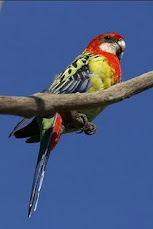


The Kagu (French: Cagou), Rhynochetos jubatus, is a long-legged blue-greyish bird endemic to the dense mountain forests of New Caledonia. It is the only surviving member of the family Rhynochetidae, although a second, larger species of the genus Rhynochetos, the Lowland Kagu Rhynochetos orarius, has been described from Holocene subfossil remains. It is almost flightless, and builds a ground nest of sticks, laying a single egg. It has proved vulnerable to introduced predators, and is threatened with extinction. The remote habitat and rarity of this species mean that little is known of its habits.
The Kagu is a ground-living bird about the size of a chicken found in the forests and shrubland of New Caledonia. Its plumage is unusually bright for a bird of the forest floor; ash-grey and white coloured. It possesses powder downs which help keep it dry and insulate it in New Caledonia's tropical climate. It uses its crest to display to other members of the species. It is nearly flightless, using its wings for displays (its primary wing feathers are patterned), and for moving quickly through the forest. It can also use them to glide when fleeing danger. The wings are not reduced in size like some other flightless birds, but they lack the musculature for flight. It possesses bright red legs and a similarly coloured bill, and has large eyes, positioned so that they give good binocular vision which is helpful in finding prey in the leaf litter and seeing in the gloom of the forest. There is little sexual dimorphism beyond a difference in the amount of barring in the primary feathers. It possesses 'nasal corns', structures covering its nostrils, which are a feature not shared by any other bird. It is these structures that gave the species its generic name, Rhynochetos, which is derived from the Greek rhis meaning nose and chetos meaning corn. Another unique characteristic of the species is that has only one-third the red blood cells and three times the hemoglobin per RBC compared to the usual situation in birds.
Kagus make a range of different sounds, most commonly duetting in the morning, each duet lasting about 15 minutes.




